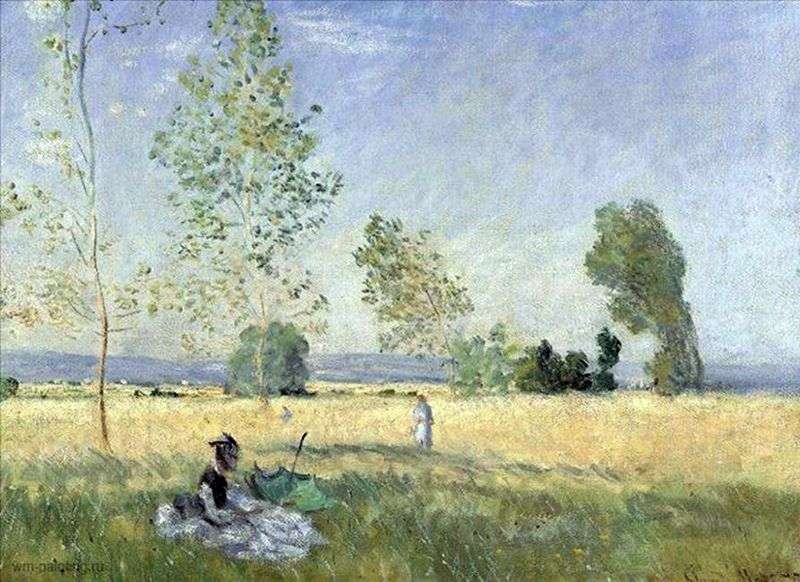
Despite the fact that the French climate can be considered mild and the winter is relatively mild there, it still bothers with dampness and wetness. The heart yearns for spring, and the soul of the artist – all the more! And, by the way, the impressionists had a special reason to admire the spring and tirelessly to paint it as a transitional period, rich in tones and semitones, shades of a rapidly changing state of nature.
However, in fairness, it is worth noting that the spring depicted by Claude Monet is one that is already in full swing. In winter here, as they say, and does not “smell”. Rather, everything lives with the anticipation of summer: the sky is higher, the sun is brighter, the trees are green and two people came for a walk, or for a picnic. Extremely unstable weather attests to spring: a strong wind is blowing. He bends down to the ground young, fresh grass and even trees, young birch trees, strives to bend almost into an arc. The artist manages to convey an almost physiological sensation of a mad gust of wind.
Another, of course, stops the attention how Monet writes tree trunks – curves, curved. Whether this was his “trick” or whether they seem so under the influence of the wind – it is difficult to say. After all, the birch trees are very young, they grow in an open field, and there is no reason why their trunks would be suddenly bent.
 The shallows on the river in the spring by Claude Monet
The shallows on the river in the spring by Claude Monet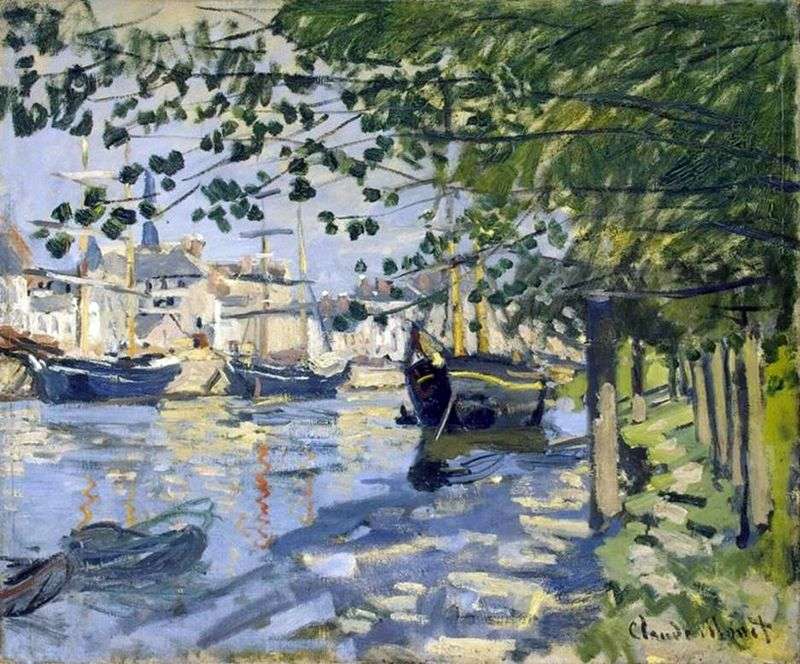 Seine at Rouen by Claude Monet
Seine at Rouen by Claude Monet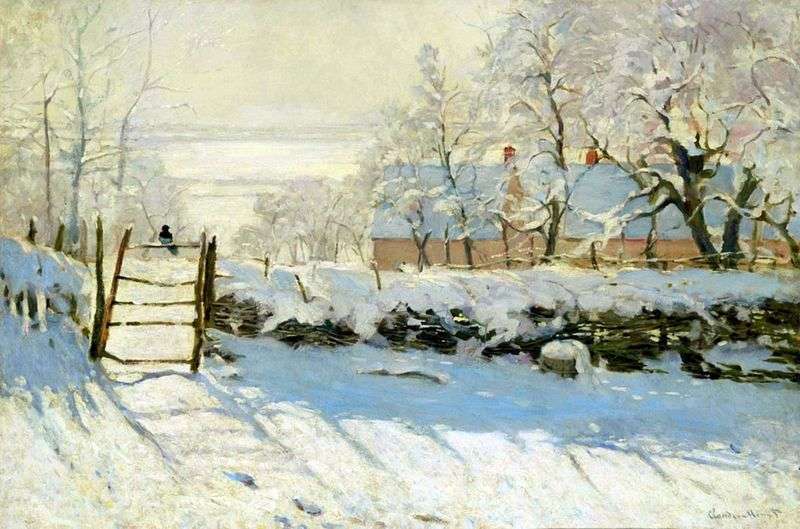 Soroka by Claude Monet
Soroka by Claude Monet Springtime by Claude Monet
Springtime by Claude Monet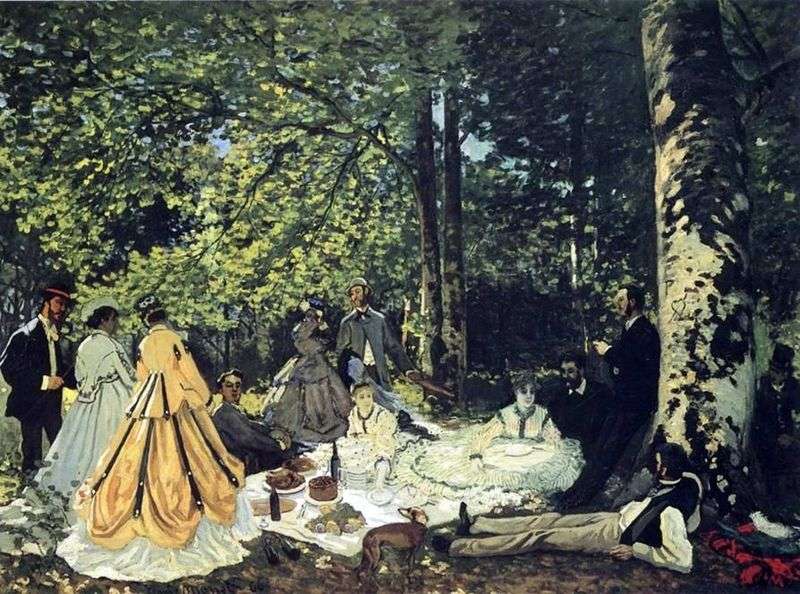 Breakfast on the Grass by Claude Monet
Breakfast on the Grass by Claude Monet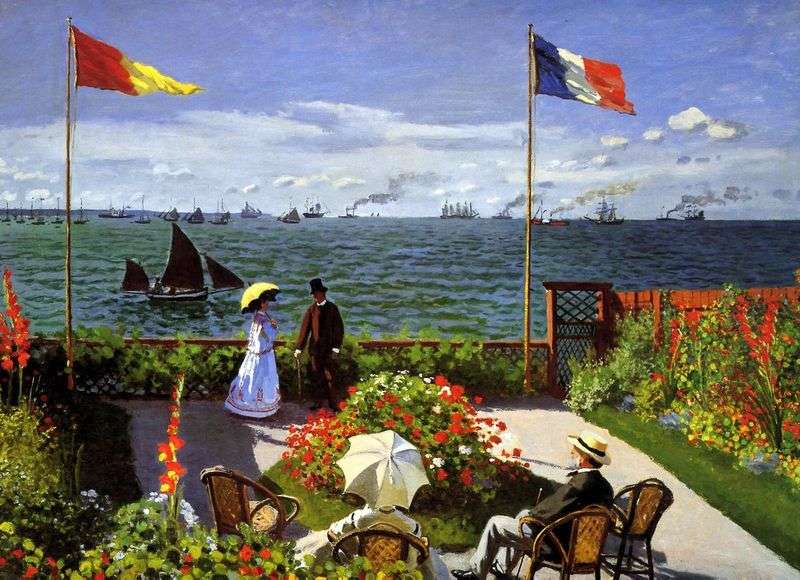 Terrace in Sainte-Adres by Claude Monet
Terrace in Sainte-Adres by Claude Monet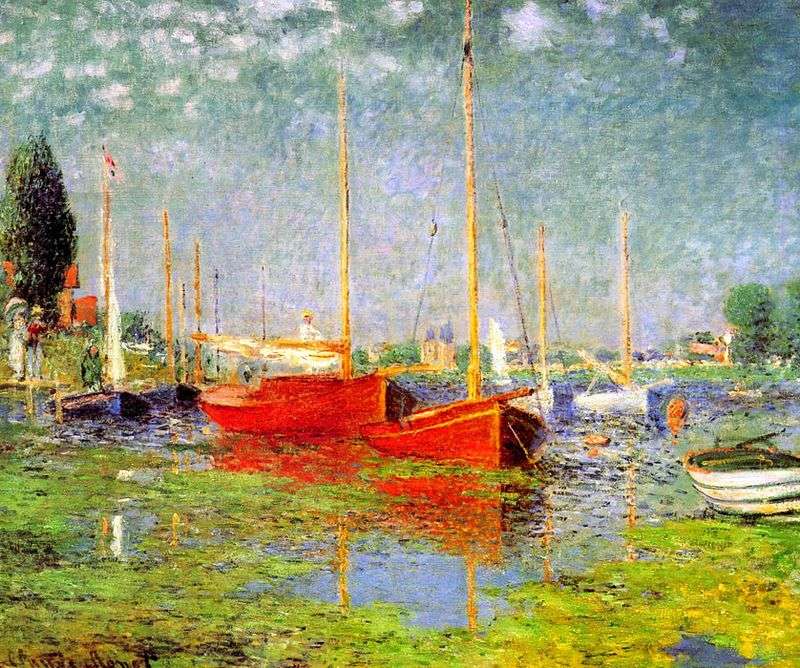 Red boats in Argenteuil by Claude Monet
Red boats in Argenteuil by Claude Monet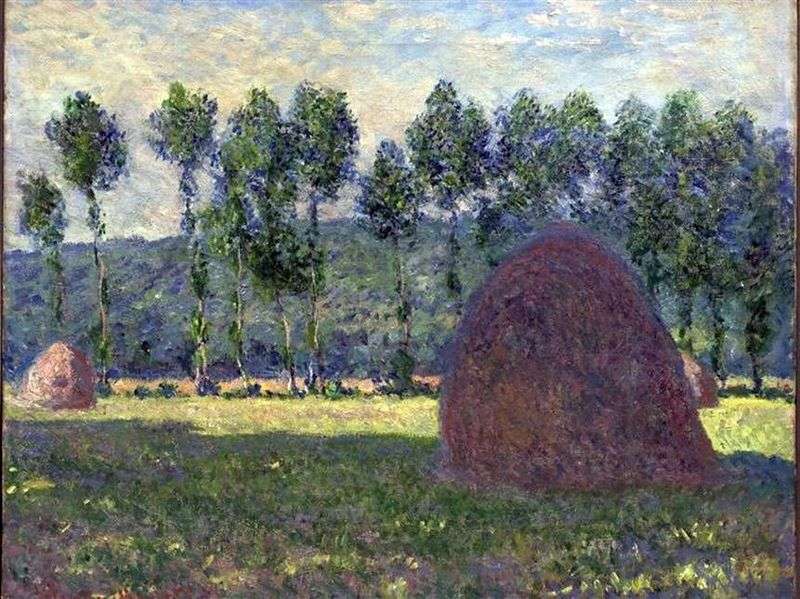 Haystack by Claude Monet
Haystack by Claude Monet